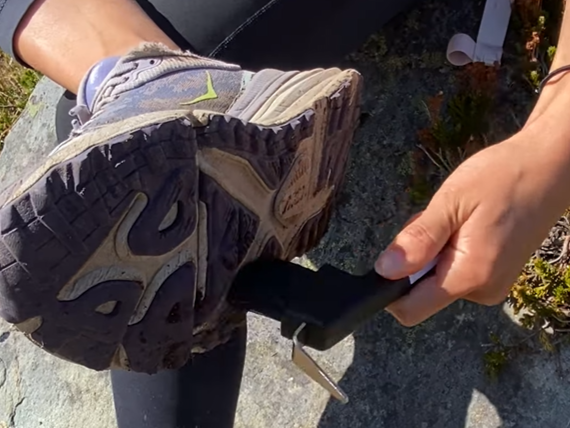Foraging can be a rewarding experience, whether you’re hunting for ripe berries or admiring the beauty of unique mushrooms. When wandering through the beautiful forests in our region, it’s easy to forget that we could unknowingly spread invasive species, which pose a serious threat to native ecosystems.

Common burdock is a species with sticky burs that easily hitchhike on clothing and gear.
The good news is that with a few simple practices, we can all help prevent the spread of invasive plants while enjoying our time in nature. Here are some key tips to keep in mind next time you head into the woods:
1. Know whose land you’re on
Before you head out foraging, make sure you have permission to take plant material from the land. In Canada, foraging on public land is allowed, but not in provincial or national parks. Additionally, don’t forage on private property unless you have explicit permission from the property owners.
2. Remember to play, clean, go
One of the best ways to prevent the spread of invasive species is by following the Play Clean Go guidelines, which focus on cleaning your gear to avoid transporting seeds, plants, and mud from one location to another. Here’s how you can make a difference:
- REMOVE plants, seeds and mud from boots, clothes & gear.
- BRUSH off any seeds clinging to you or your pet.
- CLEAN your gear before entering & leaving recreation sites
By adopting these simple practices, you can help reduce the spread of invasive plants and preserve the integrity of our natural spaces.
3. Stick to the trail
While it might be tempting to go off-trail in search of hidden treasures, it’s best to stay on designated paths whenever possible. Going off-trail can harm sensitive native plant species, and any damage to these plants creates openings for invasive species to take hold. Additionally, straying from the trail increases the likelihood of spreading invasive seeds to otherwise untouched areas. So, stick to the trail and minimize your impact on the environment.

4. Bring a boot brush
A small but effective tool in your foraging toolkit is a boot brush. Keeping one with you allows you to clean your boots and gear before leaving and after entering trailheads, reducing the risk of transporting invasive seeds.
Don’t have a boot brush yet? See us at a farmer’s market or community event near you this summer and we’ll give you one for free!

5. What if I want to forage invasive species?
While invasive species are harmful to our ecosystems, some are actually edible—and they can be quite tasty! For example, Himalayan blackberry is a common invasive species that can be foraged and enjoyed.
If you’re considering foraging invasive plants, here are a few important practices to ensure you do so safely and responsibly:
- Make sure that you know what you’re looking for, and that you are positive about your ID before consuming anything. The app iNaturalist is a great way to identify plants as you go, or refer to our species profile pages.
- Avoid areas treated with herbicide. Depending on where you live, some invasive species growing nearby may be treated with herbicide. On public land in the Sea to Sky, there will always be signs in the area warning of herbicide application; keep an eye out for these signs and avoid foraging in these areas.
- Avoid foraging close to roadsides and in recently flooded areas. Plants in these areas may have absorbed harmful chemicals or fumes.
- Dispose of invasives properly. While it might seem counterintuitive, any invasive plants (even fragments, like stems or roots) that you discard should go in the garbage—not the compost. Many invasive species can regenerate from fragments or have seeds that survive the composting process, spreading them further.

Himalayan blackberry is an invasive species that produces tasty blackberries.
For more information on foraging invasive species, check out our edible invasives page, where you’ll find additional tips and recipes.


Add Comment